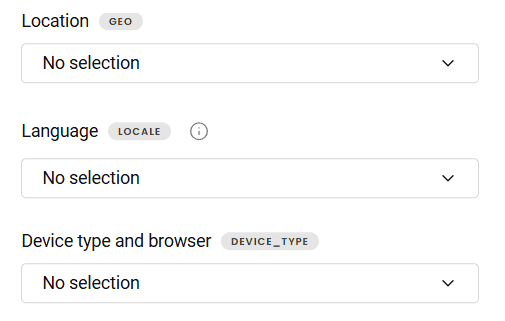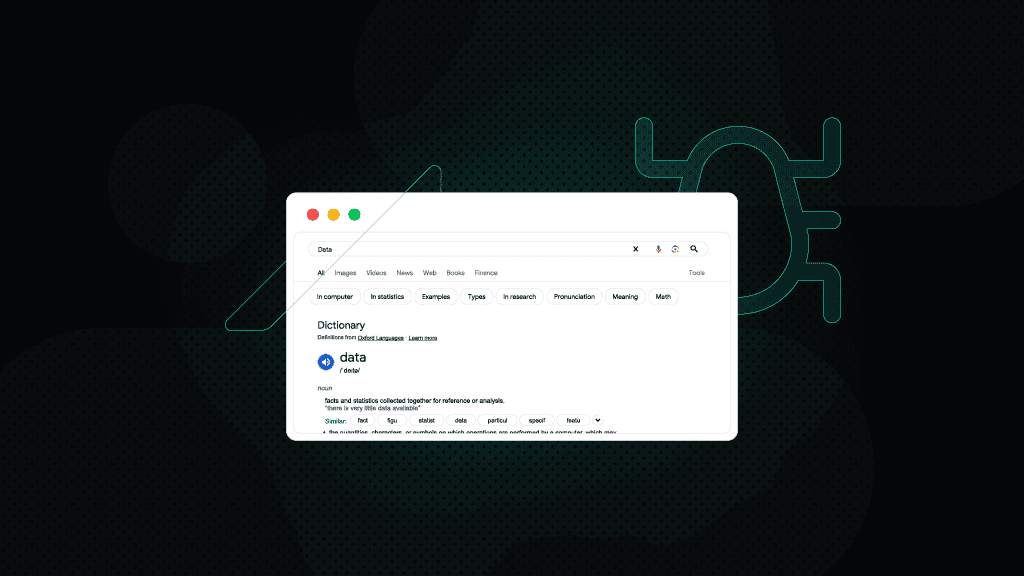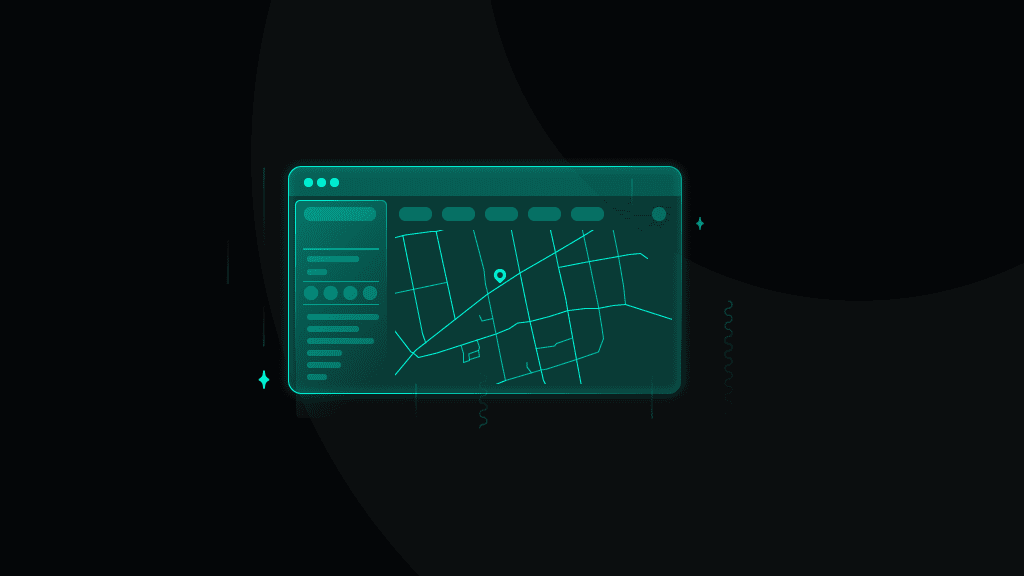How to Scrape Data from Google Play Store
Ever wondered how some app developers always seem one step ahead on Google Play? The secret often comes down to data – lots of it. Instead of waiting around for monthly “Top Charts” updates, the smartest teams use Google Play scrapers to track real-time metrics and stay ahead of the competition. In this article, you’ll learn how to do exactly that, gaining the tools to effortlessly scrape everything from download totals to one-star rant emojis.
Lukas Mikelionis
Jul 07, 2025
6 min read

What is a Google Play scraper?
A Google Play scraper is a tool that automatically pulls data from the Google Play Store. Instead of copying app details by hand, it gathers everything in seconds. You can use it to collect app names, descriptions, categories, version histories, star ratings, review counts, and download numbers, all at once, across multiple apps.
Here’s what it can extract:
- App info. Title, description, category, release date, version, and update history.
- Ratings & installs. Average rating, breakdown of ratings, and total number of installs.
- Reviews. Review text, date, reviewer name, and rating for each review.
- Developer details. Name, website, email, and address.
All of this data is already public on Google Play. A scraper simply helps you collect data at scale and organizes it into a clean, structured dataset that you can sort, filter, and analyze however you like.
Why bother scraping Google Play?
Google Play is a living dashboard of what the world downloads and loves. Mine that data and you unlock answers to questions your typical research can’t solve. It’s a quick way to spot what’s trending, what users love, and where the market’s headed.
If you’re building an app or working in app store optimization (ASO), this kind of data is gold. You can track competitors, see what features they’re promoting, and determine what’s working (or not). Learning how to scrape data from the Google Play Store can also help you tweak your own app listings to show up higher in search and attract more users.
Scraping data from Google Play Store isn’t just for app owners, though. Here’s how different teams put that scraped data to work:
- Market analysts. Spot download spikes early and size up emerging niches.
- Competitor hawks (devs & ASO pros). Watch rival update notes and review sentiment to reverse-engineer their ranking jumps or crashes.
- ASO specialists. Mine high-performing keywords and recurring user gripes to rewrite titles and screenshots that convert.
- Product teams. Sift bulk reviews for bug mentions and feature requests to prioritise the roadmap with data, not hunches.
- Researchers & data scientists. Run sentiment or churn studies on millions of natural-language reviews that no survey could match.
Methods to scrape Google Play data
There are several ways to scrape data from Google Play, with the best options depending on your technical skills and the kind of data needed. Let’s break down the three most common methods so you can choose the one that works best for you.
Using official APIs
Google offers a Google Play Developer API for certain data, mainly for developers to access their own app’s info (like reviews and purchase stats). It’s clean, reliable, and compliant, but very limited in its capabilities.
For example, you can’t get older reviews or scrape data for apps you don’t own. If you're just looking to monitor feedback on your app, this might be enough. But if you need broader data (like your competitors’ reviews or search results), you’ll need another method.
Code your own scraper
If you can code, you can write a custom scraper using tools like Python (with requests and Beautiful Soup), or automate it with Selenium or Playwright for dynamic content. There are also handy libraries, such as google-play-scraper, for Node.js or Python, that make this easier.
This route gives you full control, so you decide what data to pull and how to process it. But coding your scraper from scratch also means more work because you’ll have to handle things like pagination, site structure changes, and potential blocks (if terms like HTML parsing and CSS selectors make your eyes glaze over, keep reading, the next option is for you).
Use a no-code tool
If you want results without the hassle, a no-code tool like Decodo’s Google Play Scraper API is your best bet. This tool handles everything for you, from HTML parsing and proxy management to CAPTCHA bypassing, and returns clean, structured data (HTML, JSON, or CSV).
With Decodo’s Web Scraping API, you can fetch Google Play data by making a simple request or using a user-friendly interface, instead of building everything from scratch. The big advantage here is ease and reliability. No setup, no maintenance, no coding, just pure data you can start using immediately. It’s ideal for marketers, researchers, or teams that need data quickly without having to build a solution from scratch.
Try Web Scraping API for free
Collect data from Google Play store with just a few clicks and zero CAPTCHAs or IP bans.
A step-by-step guide to scraping Google Play without coding
Here's a foolproof method for scraping the Google Play Store and extracting all the data you may need for your project.
Step #1 – find the app or category URL
First, sign up on the Decodo dashboard and start your 7-day free trial. Next, copy the URL of the Google Play page you want to scrape. For example, if you want to scrape a search page for “photo editors”, you can search it on the Google Play Store and paste the link in your scraping tool’s dashboard. This tells the tool exactly which page to extract data from.

Step #2 – set your parameters
Scraping public data should still be context-aware. With Decodo, you can define parsing rules, enable JavaScript rendering for dynamic content, and customize HTTP headers, geolocation, and language preferences, all without touching a line of code. You’re not just scraping "a page", you're simulating a user session with pinpoint control. Want to target US users on a Pixel 7 phone with English settings? Decodo can do that. Need French reviews from Canadian users only? That's possible too.

Step #3 – launch the scraper
Once you’re done, click Send Request. That’s it. Decodo takes care of everything else, handling headless browsers, rotating proxies, bypassing CAPTCHAs, and avoiding rate limits. You don’t have to worry about setup or maintenance. The built-in scraper ensures you get clean results without getting blocked.
Step #4 – download your data
Once the scraper finishes, your data is ready. You’ll get a structured file – usually in CSV, Excel, or JSON format. Preview the data in the dashboard if you'd like, then export it with a single click. If you scraped reviews, you’ll see review text, rating, date, and reviewer name. If it were a category, you’ll get a list of apps with titles, ratings, install counts, and more. You can now use this data for reports, analysis, or feeding into other tools.
Tips & best practices for scraping Google Play like a pro
Successfully scraping Google Play requires more than just pointing a web scraper at the app store and hoping for the best. The platform has advanced anti-bot measures, rate limiting, and dynamic content loading that can quickly derail amateur scraping attempts. To extract app data reliably and at scale, you'll need to employ strategic techniques that mimic human behavior and handle the complexities of modern targets.
Target only the relevant information
Scraping everything slows down jobs, bloats storage, and inflates costs. Decide what drives value (e.g., rating histograms + install counts) and skip the rest (full‐text reviews, changelogs) unless that's the data you need for your use case.
Space out your requests
Google Play starts rate-limiting at suspicious bursts of ~100 requests per minute from a single IP. Build a back-off strategy: stagger requests (e.g., 1–2 requests per second), randomize headers, and rotate IP addresses. Your crawl will finish a few minutes later, but you’ll avoid the 429 error hammer and the day-long cooldown that follows.
Watch for structure changes
Google tweaks its Play’s DOM quietly and often, so you need to constantly wrap selectors in a config file, write unit tests that alert on null fields, and version-control your parsing logic. Or you could simply use Decodo, as our services stay ahead of layout changes, so your roadmap doesn’t grind to a halt.
Common challenges and how to overcome them
From technical hurdles to data quality concerns, preparation for typical scraping scenarios will save you time and frustration during your Google Play data extraction efforts.
CAPTCHAs & anti-bot walls
Google hates robotic traffic, so you'll need to use headless browsers, realistic fingerprints, and IP rotation. Platforms like Decodo run full browser sessions and overcome CAPTCHAs, so you rarely see a challenge screen.
IP bans & rate limits
Excessive requests from a single address may result in rate limits being applied. Ensure you rotate residential or mobile proxies, insert randomized delays, and keep requests to around 1–2 per second per IP. Decodo’s built-in pool spreads traffic for you.
Huge datasets
Dragging tens of thousands of rows into memory will choke your pipeline. Paginate, scrape in batches, stream data directly to storage, and use continuation tokens so that failed runs can resume instead of restarting.
Alternatives to scraping
Scraping isn’t your only option for Google Play data, but it’s the smartest.
Platforms like Sensor Tower and data.ai offer high-level metrics, such as downloads, revenue, and lifetime value, via APIs and dashboards. However, they come at a high premium cost and have limited flexibility that's crucial for most use cases.
If you only need public app data (ratings, reviews, rankings), a Web Scraping API like Decodo's one, can deliver structured results without the need for infrastructure overhead. For owned apps, Google Play Console’s CSV exports are the simplest route.
Wrapping up
Scraping the Google Play Store opens the door to rich, actionable insights, whether you're tracking competitors, analyzing reviews, or fine-tuning your ASO strategy. We’ve covered what a Google Play scraper does, why it matters, and the smartest ways to do it, from coding your own to using powerful no-code platforms like Decodo.
The takeaway? Select the method that aligns with your team’s goals, technology stack, and tolerance for ongoing maintenance. For most product and data teams, scraping-as-a-service delivers the best balance of speed, scale, and simplicity.
Scrape Google Play with just a few clicks
Start your 7-day free trial of all-in-one Web Scraping API and get data without a single restriction.
About the author

Lukas Mikelionis
Senior Account Manager
Lukas is a seasoned enterprise sales professional with extensive experience in the SaaS industry. Throughout his career, he has built strong relationships with Fortune 500 technology companies, developing a deep understanding of complex enterprise needs and strategic account management.
Connect with Lukas via LinkedIn.
All information on Decodo Blog is provided on an as is basis and for informational purposes only. We make no representation and disclaim all liability with respect to your use of any information contained on Decodo Blog or any third-party websites that may belinked therein.

